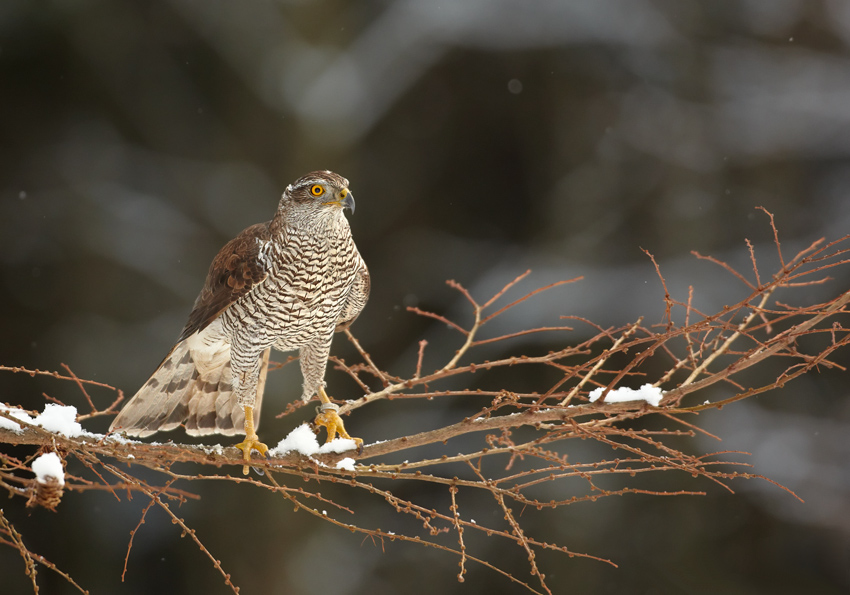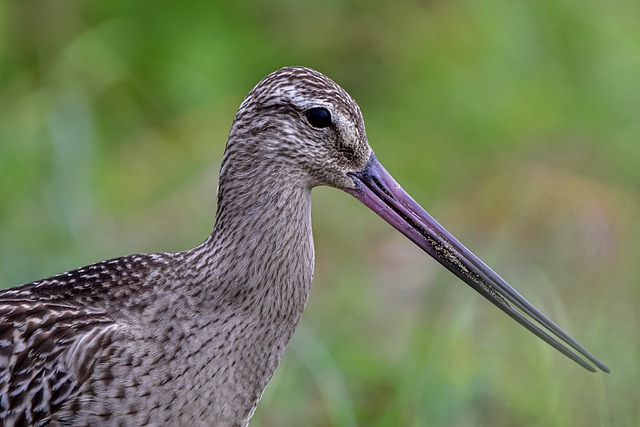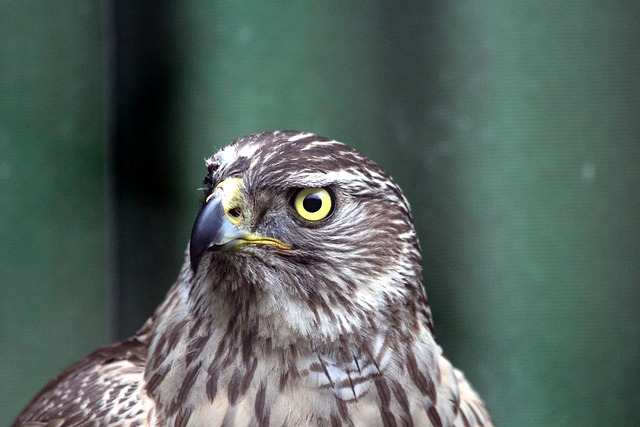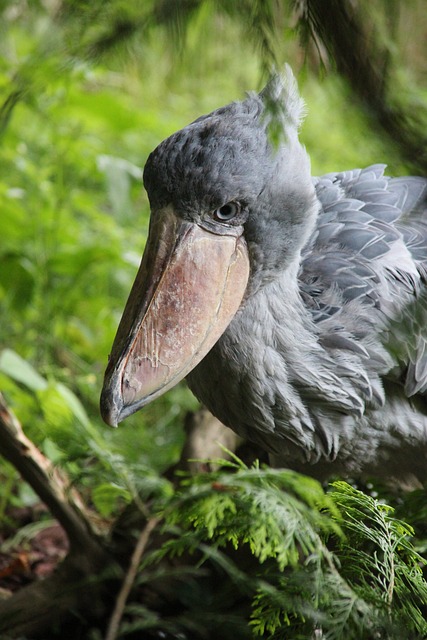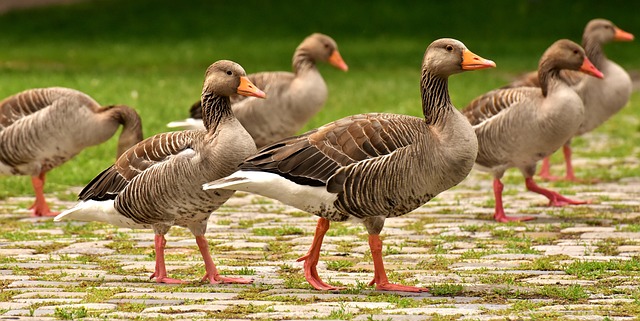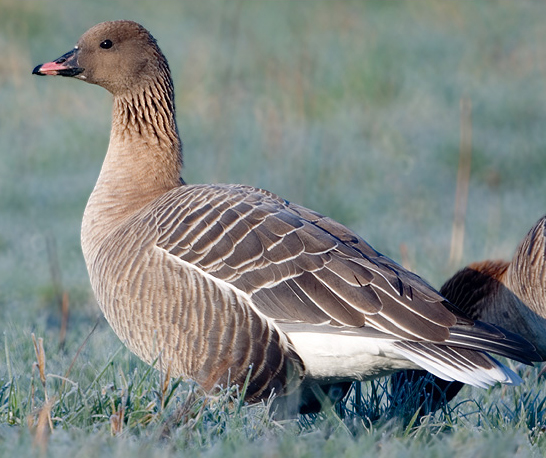The black-tailed godwit is an intriguing species of shorebird found in wetland habitats in North America, Europe, and Asia. With its distinctive black tail, this remarkable bird is one of the most widely-recognized species of shorebird in the world.
The black-tailed godwit is a medium-sized wader with a long, slender bill. Its body is brownish-grey on top and white on the underside. The wings are long and pointed and the tail is jet-black. The adult godwits have a distinctive black stripe running along the top of their heads.
The black-tailed godwit is found in wetlands, estuarine and coastal habitats. During the breeding season, it is found in northern Europe and Asia, as well as parts of North America. During the winter, the godwits migrate to Africa and other parts of Asia.
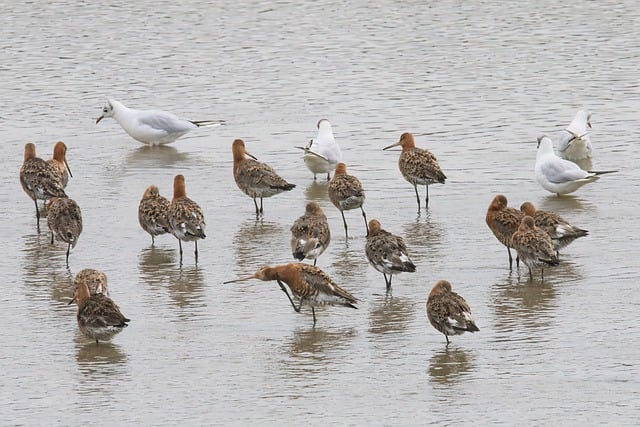
The black-tailed godwit is a social species, often forming large flocks during migration and in wintering habitats. In the breeding season, the godwits are more solitary, but still form small groups of 2-3 individuals.
The population size of the black-tailed godwit is decreasing due to habitat destruction and degradation. Conservation efforts are being made to protect this species, which is classified as Near Threatened on the IUCN Red List.
Overall, the black-tailed godwit is a fascinating species of shorebird, with a variety of behaviors and adaptations that make it a valuable addition to the wetland habitats it calls home. The following sections will provide an in-depth look at the physical characteristics, behavior, reproduction, diet, and predators of this remarkable species.
Appearance
The black-tailed godwit is a medium-sized wader of the family Scolopacidae. It is recognizable by its characteristic long, orangey-brown bill and black-tipped tail feathers. The godwit has a wingspan of around 48–54 cm (19–21 in) and an overall length of 35–42 cm (14–17 in). In flight, the godwit has a strong, direct flight with rapid wingbeats and can reach speeds of up to 70 km/h (43 mph).
Godwits have a distinctive plumage, consisting of a mottled brown mantle, dark brown wings, and white underparts. The black-tailed godwit has a pale brown crown, nape and face, and the adult male has a white throat and supercilium. Its distinctive long bill is pinkish-orange at the base with a black tip. The black-tailed godwit males also have a reddish-brown breast and flanks, while the females have a more mottled brown coloration.
The male has a longer bill than the female, an adaptation that helps them compete for mates during the breeding season. Juveniles have a brownish-gray coloration with pale pinkish legs, and a white spot on the back of their neck.
At the start of the breeding season, the godwit undergoes a process called ‘alternate moult’. This is when the male’s plumage becomes more bright and colorful with the addition of a black stripe on its breast and more barring on its flanks. This change in plumage is an adaptation to attract a mate.
The black-tailed godwit has developed a variety of adaptations that help it survive in its natural environment. These adaptations include its long bill and legs, which help it probe for food, and its large wingspan, which helps it fly long distances. It has also adapted to a diet that consists mainly of small invertebrates, which it finds by using its bill to probe the mudflats and sandy beaches.
Behavior
The behavior of the black-tailed godwit is fascinating to observe. For the most part, these birds are quite social, though they can be solitary when necessary. They are known to migrate in flocks and have been observed to forage in large groups.
In terms of foraging, the black-tailed godwit is quite versatile. They use their long bills to probe in mud and shallow waters for food, and also to scrape up food from vegetation on land. They feed mainly on mollusks, earthworms, and insects, but they also consume seeds, grasses, and other plant matter.
The black-tailed godwit is a migratory bird, traveling in flocks to different regions in search of better climates and food sources. During the spring and fall migration periods, the birds congregate in large numbers in various wetlands, fields, and coastal habitats in Europe and Asia.
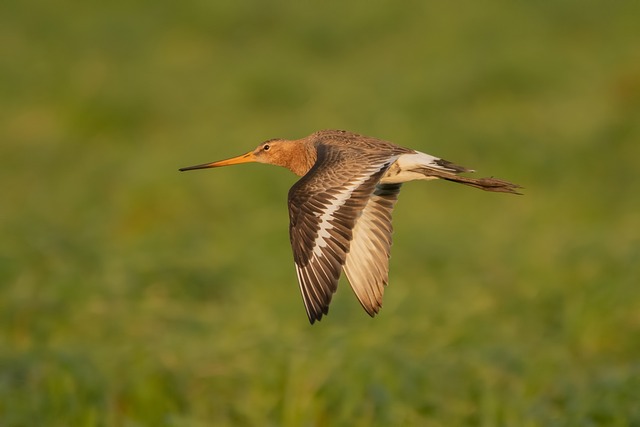
Breeding season is also an important time for the godwit. During this period, they typically form loose breeding colonies in wetland habitats. The male birds can be identified by their loud vocalizations. The nesting habits of the black-tailed godwit are also interesting. They prefer to nest in shallow depressions in the ground, though they can also be found nesting in trees or on cliffs.
The godwit is also adept at defending itself against predators. Its long legs make it an efficient runner, allowing it to outrun predators on land. In the air, the godwit relies on its swift flight and sharp eyesight to detect predators and escape. Its migration is also an important defensive strategy, allowing it to move away from areas with high predator populations.
The black-tailed godwit is an amazing bird with some interesting behaviors. Its long legs and bill give it the ability to forage in both water and land environments, and its migratory behavior allows it to find food sources in different regions. Its nesting habits and defensive strategies make it a resilient species.
Reproduction
The black-tailed godwit mates for life, with both parents working together to protect and raise their young. Breeding usually occurs during the summer months from May to August.
The godwit nests on the ground, often near streams, ponds, or wetlands. They prefer locations with tall grasses or shrubs to provide shelter and protection from predators. Nests are constructed by both the male and female using dried grasses and feathers. Eggs are laid in the nest, usually four or five, and take up to three weeks to hatch.
Migration is an essential part of the black-tailed godwit’s life cycle. After breeding, the godwits migrate south to warmer climates, often travelling thousands of miles. The migration flight is usually undertaken by the female alone, who will take the chicks with her. She will return to the same breeding grounds the following spring.
When it comes to feeding their young, the godwits practice brood parasitism. This involves leaving their chicks with other godwit females who will feed and protect them, while the original parents are off foraging for food.
The chicks are able to fly within two weeks of hatching. They will then join their parents for the journey back to the breeding grounds in the spring.
As the black-tailed godwit is a migratory species, the length of its breeding season varies depending on the location of its breeding grounds. In the northern hemisphere it can breed as early as April, while in the southern hemisphere it may not breed until October.
Diet
The black-tailed godwit is a mainly carnivorous species, relying heavily on insects, mollusks, and worms for sustenance. It has also been known to feed on crustaceans, amphibian larvae, small fish, and even some plant material. The godwit has a wide range of foraging techniques, from running and probing the soil to pecking at prey, depending on the type of prey.
Insects make up the majority of the black-tailed godwit’s diet. The species will feed on beetles, crickets, and especially grasshoppers, which provide essential protein and fat. The godwit is also an avid consumer of earthworms. During the breeding season, the species is known to feed on mollusks, like snails and slugs, as well as crustaceans.
When foraging for food, the black-tailed godwit displays an array of techniques. It often probes in the soil, using its long bill to search for food, and will also employ a technique known as ‘stab-probing’, where it stabs its bill into the ground to search for worms. The godwit is also known to peck at food, particularly smaller items, such as insects and small fish.
In spite of this variety of foraging techniques, the godwit can be quite a clumsy eater, often dropping morsels of food in its haste to catch prey. To combat this clumsiness, the species has adapted to use its wings to help scoop up food.
The godwit also utilizes a technique known as ‘bobbing’, whereby it submerges its head underwater before quickly resurfacing with a beak full of food. This technique is employed frequently when the species is seeking crustaceans and amphibian larvae.
The black-tailed godwit's diet is incredibly varied, depending on the season and its location. During the breeding season, the species will rely heavily on insects and other small invertebrates, while during its migration it may feed on more terrestrial prey, such as seeds and other plant material. The godwit will also eat more fish during its migration, especially when close to the seashore.
Predators
When it comes to predators, the black-tailed godwit is a very resilient bird. Despite its size, it is able to fend off any attack from larger birds of prey. It is also able to escape from the clutches of the avian predators by hiding in dense vegetation or flying away at high speed.
Common predators of the black-tailed godwit include raptors, such as the sparrowhawk, peregrine falcon, and marsh harrier. These birds of prey often hunt for the godwit's eggs or small chicks. In addition to raptors, the black-tailed godwit also falls prey to foxes, badgers, and even cats.
The godwit's main defense against predators is its ability to fly away quickly. The bird is able to maneuver quickly using its long wings and strong tail to reach a safe distance away from the predator. In addition, it is also able to hide in dense vegetation, such as reeds and grasses, to avoid detection.
The godwit also has several strategies for defending itself when confronted by a predator. When threatened, the godwit will fly up in the air and rapidly flutter its wings in an attempt to deter the predator. It may also spread its wings and tail in a threatening manner to make itself look bigger.
Another important defense of the black-tailed godwit is its migration pattern. The bird flies long distances each year, which helps to keep it away from predators. This is especially effective when the godwit is migrating from its breeding grounds to its wintering grounds. During their annual migration, the godwits cover great distances throughout Europe, Asia, and North America, which significantly reduces their risk of predation.
All of these strategies help to ensure the survival of the black-tailed godwit in the wild. The bird is able to adapt to various situations and has several ways of defending itself against predators, making it a resilient species.
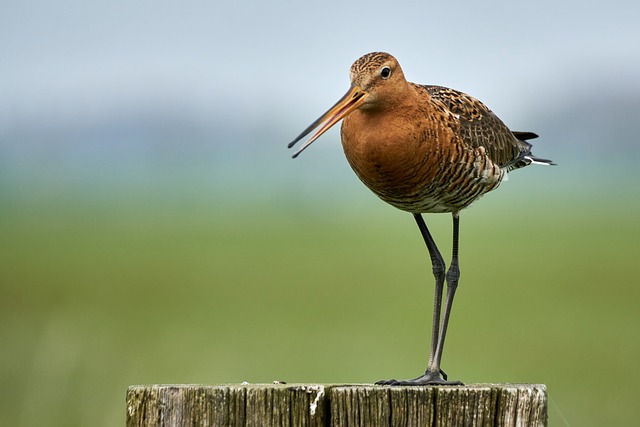
Fun Facts
The black-tailed godwit is a fascinating bird that stands out for its unique behaviors and adaptations. For starters, the black-tailed godwit is the only migratory godwit with a black tail. They have impressive migratory feats, able to fly from their breeding grounds in Europe and North America to their wintering grounds in South America. They can travel up to 10,000 miles in a single round trip!
In addition to their incredible migratory abilities, the black-tailed godwit is also known for its interesting behaviors. During courtship, they perform a display flight that involves rapidly flapping their wings and calling out with a loud song. In the breeding season, they also engage in a territorial defense display that involves chasing other birds away from their nesting areas.
The black-tailed godwit is also adapted for their diet. They are able to probe deep into mud and silt to feed on small invertebrates and insects. They also have an impressive gular pouch located at the base of their beak that can expand to hold up to 1.6 liters of food, allowing them to take in more food in a single foraging trip.
The black-tailed godwit has developed unique defensive strategies to protect itself from predators. When startled, they take flight and will rarely stay in the same place for more than a few seconds. This helps throw off the predator's pursuit. They also practice “anti-predator displays”, where they crouch and spread their wings outward in order to make themselves appear larger and more intimidating.
Finally, the black-tailed godwit is an intelligent species of bird that can recognize individual humans. They have been shown to remember friendly faces and will seek out humans they have come to trust for food or protection. This unique behavior shows us just how intelligent and adaptable the black-tailed godwit is!
